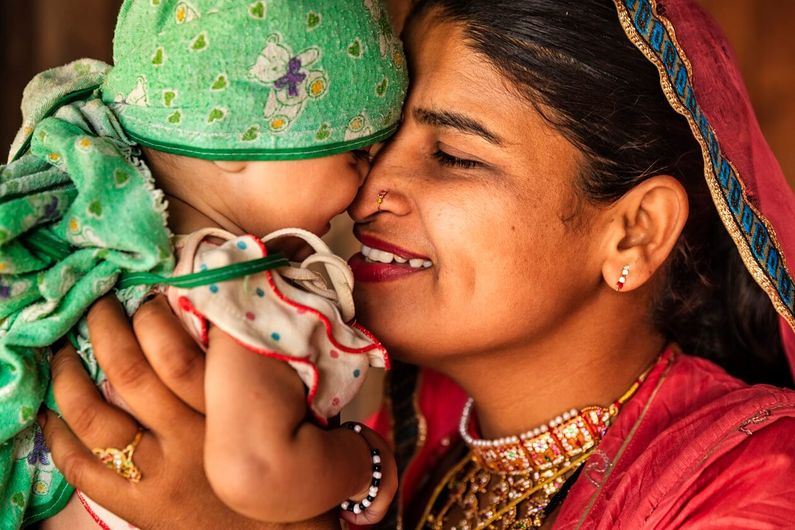India’s skewed sex ratio
- UdeMNouvelles
03/07/2023
- Martin LaSalle
Poised to become the world’s most populous country, India is grappling with a shortage of women. UdeM anthropologist Karine Bates looks at the multiple causes and far-reaching consequences.
According to the United Nations’ most recent report on world population growth, India will overtake China as the most populous country on the planet in 2023. Yet this country, which granted women the right to vote at the same time as men when it gained independence in 1947, faces a major decades-old demographic challenge: a shortage of women.
The most recent census, taken in 2011, showed a ratio of 940 women for every 1,000 men, and 918 girls for every 1,000 boys (newborns to age 6).
According to Karine Bates, a professor in Université de Montréal’s Department of Anthropology, this gender imbalance has multiple causes and consequences, and a radical cultural shift is needed to correct it.
A specialist in legal anthropology, Bates studied judicial and social reforms affecting women’s property and inheritance rights, dowry and child support in India.
“India’s large body of law has enabled women to make major legal advances since the country’s independence,” she said. “However, access to justice is severely hampered by bureaucracy.”
In the course of her field research during four years spent living in India, she found that the country’s legal pluralism results in laws being applied differently in different parts of the country.
At the same time, “the state and the police are very distant from most people,” said Bates. “In practice, Indians often have to resolve conflicts on their own, as best they can, based on their conception of what is just and unjust.”
Three main reasons for the deficit of females
Preference for sons
“In Indian culture, the eldest son must take care of his parents in their old age,” said Bates. “Only 12 per cent of Indians receive an old-age pension, so there is considerable pressure on couples to have a boy. It is almost impossible for aging parents to stay with a daughter because when a woman marries, she goes to live with her in-laws. So these cultural norms can contribute to insecurity in old age.”
Sex-selective abortions
Given the pre-existing bias against girls, the introduction of prenatal ultrasound testing in the 1970s led to widespread sex-selective abortion. Although such abortions became illegal after laws banning prenatal sex determination were passed in 1994, the practice continues because of inadequate and patchy enforcement.
“Often, in-laws are present during the prenatal ultrasound and put pressure on the woman to have an abortion if she’s carrying a girl, particularly in the case of a first child,” said Bates. “Not only is there an underground network for illegal abortions, but they are also sometimes available even within the healthcare system.”
Rise of the middle class
Rising living standards in India have led to the emergence of a middle class able to pay for abortion. Moreover, as Bates explained, “there is still strong pressure among the middle class to have sex-selective abortions because they no longer have access to a pension plan.”
New pressures on Indian women
While there is still a significant gender gap in higher education, large numbers of young women have been able to enter institutions of learning. Many women now have a high level of education and participate in the formal or informal economy (80 per cent of India's economy is informal).
“In recent decades, Indian women have gradually gained greater autonomy and bargaining power,” said Bates. “More women are leaving marriages and living on their own, which they can now do because of their greater economic power.”
However, Bates is seeing setbacks in the status of women: “In recent years there has been a resurgence of patriarchal attitudes and male domination. Women are expected to do it all, to excel at work and, most importantly, to be good wives and mothers.”
In Bates’ view, “it is more difficult to be a woman in India today than it was several decades ago, despite their increased economic power and the existence of laws designed to protect their rights. The gains made by women are being subtly but steadily eroded under the influence of the Hindu nationalist movement, which extolls the virtues of being a good daughter, good wife and good mother.”
Consequences of the skewed sex ratio
In scientific literature, a male-skewed sex ratio is associated with increased violence and crime. More men remain single, and unmarried men are more likely to commit violent crimes than married men. When the gender imbalance becomes very large, the problems mount. For example, in the Indian states of Haryana and Punjab, where the shortage of women is most pronounced, the illegal trafficking of poor women from other parts of the country has flourished.














